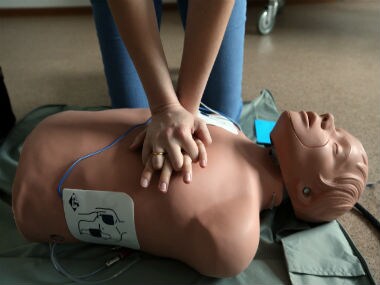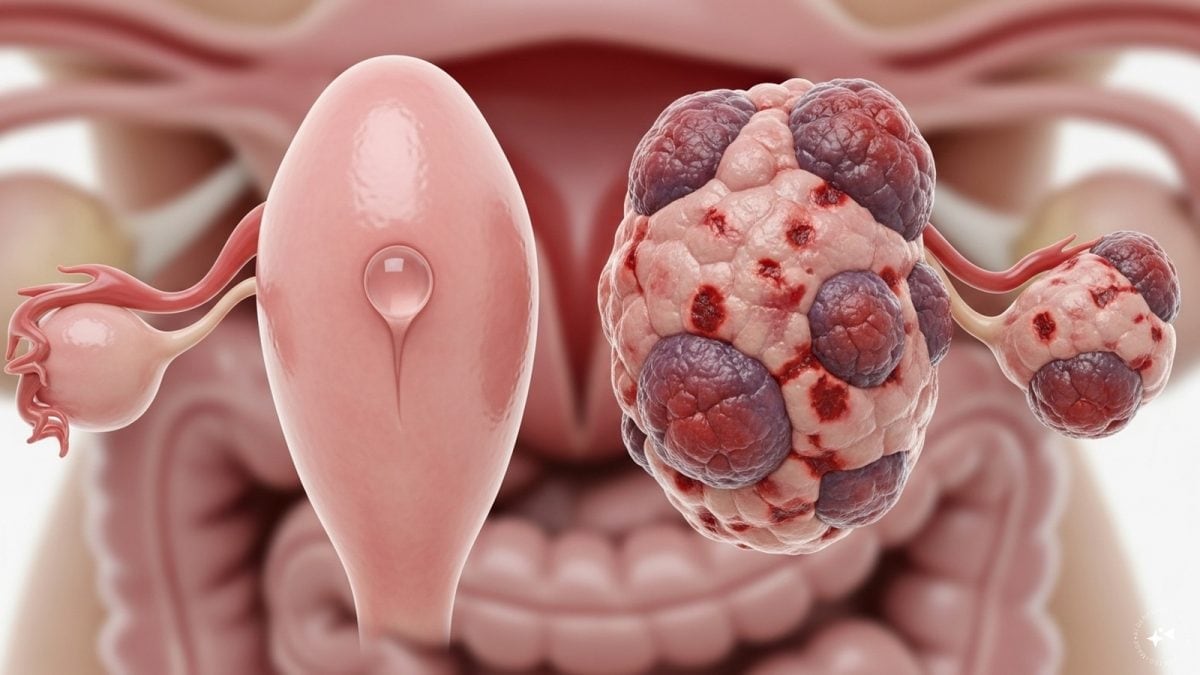Four districts of Bihar, including Patna, are on orange alert till 4 October - heavy rainfall has claimed more than 40 lives in the state. The National Disaster Response Force has been deployed to rescue people from submerged regions. Of course, the rescue teams are well-versed in the steps and protocols of emergency medicine. But it helps to know simple techniques like cardio-pulmonary resuscitation or CPR, to keep friends and family safe in an emergency. [caption id=“attachment_7446931” align=“alignleft” width=“380”]  Representational image. Image source: Getty Images.[/caption] Though CPR can help save a life during a cardiac or breathing emergency, rescue breaths — an integral part of CPR — should only be performed by someone who has been professionally trained in the procedure. Like with most things, CPR takes practice to perfect.
What is CPR?
CPR is an emergency life-saving procedure done when an individual’s breathing or heartbeat stops or becomes irregular suddenly. CPR requires proper training and knowledge before it can be practised by an individual. Untrained people may offer “hands-only” CPR.
When to perform CPR?
CPR can be performed in cases where a person has fallen into the water and is not breathing, has had a cardiac arrest with no signs that they are breathing, or suffered a head injury leading to loss of consciousness, etc.
Checklist before performing CPR
It’s important to complete these basic steps before you start CPR:
- Ensure that the scene is safe. For example, make sure you’re not in a place where the water is still rising. Then, tap the person on the shoulder and ask if he or she is okay.
- Call for medical help or an ambulance, and ask for an AED (automated external defibrillator), if available.
- Help the person lie down on their back and then open the airway by tilting their head back slightly - this also prevents the tongue from rolling back and obstructing the breath. Check that nothing is obstructing their breathing.
- Check if the person is breathing - don’t spend more than 10 seconds on this. In case you do not hear any breathing sounds, start CPR.
How to perform CPR
The Red Cross Society offers CPR certification classes. Some national hospitals also offer training. Learning from a professional, and practising on a dummy model is easier and more efficient in the early stages. The steps involved in CPR are:
- Sit next to the victim’s shoulder. Place the heel of your right palm in the middle of their chest. Place your left hand on top of the right one, interlock the fingers.
- Straighten your elbows.
- Using your entire body weight, administer compressions that are 2-2.4 inches deep and delivered at a rate of at least 100 compressions per minute (about twice every second). Some practitioners find it easier to time the compressions with the chorus of the Bee Gees song Staying Alive.
- The next couple of steps should only be performed by someone trained in CPR. If you haven’t been professionally trained, continue the compressions till the rescue team arrives.
- Those trained in CPR can move on to deliver the rescue breaths. Tilt the patient’s head slightly back and pull gently on the chin to open the mouth. Pinch the patient’s nose shut, and blow into their mouth to make their chest rise. After delivering two rescue breaths, start the compressions again.
- If the chest does not rise with the initial rescue breath, re-tilt the head before delivering the second breath. If the chest still doesn’t rise with the second breath, then look for any obstruction in the airway.
- Keep performing cycles of chest compressions and breathing until the person exhibits signs of breathing, or a trained medical responder arrives on the scene.
Hands-only-CPR
According to the 2011 Korea Guidelines for CPR, performing hands-only CPR can increase the survival rate in people having a cardiac arrest compared with no CPR performed. Hands-only CPR involves these steps:
- Kneel beside the person who needs help and place the heel of one hand on the centre of the chest.
- Place the heel of the other hand on top of the first hand, then lace the fingers together.
- Positioning the body in such a way that hands and shoulders are in the same line, make your arms straight.
- Using the body weight administer at least 100 compressions per minute that are at least 2 inches deep.
- Keep performing cycles of chest compressions until the person exhibits signs of breathing, or a trained medical responder arrives on the scene.
While one hopes that friends and family stay safe always, it helps to know the basics of emergency medicine for extraordinary events. Health articles in Firstpost are written by myUpchar.com, India’s first and biggest resource for verified medical information. At myUpchar, researchers and journalists work with doctors to bring you information on all things health. For more articles, please visit myUpchar.com


)

)
)
)
)
)
)
)
)



